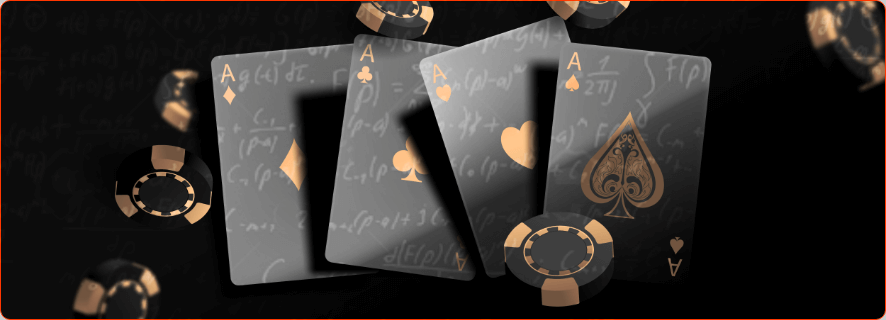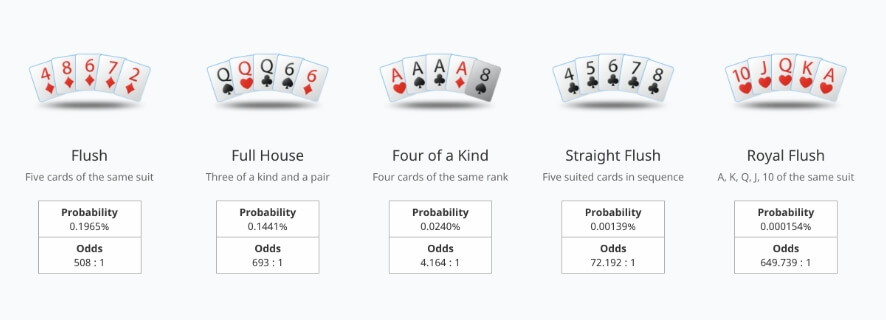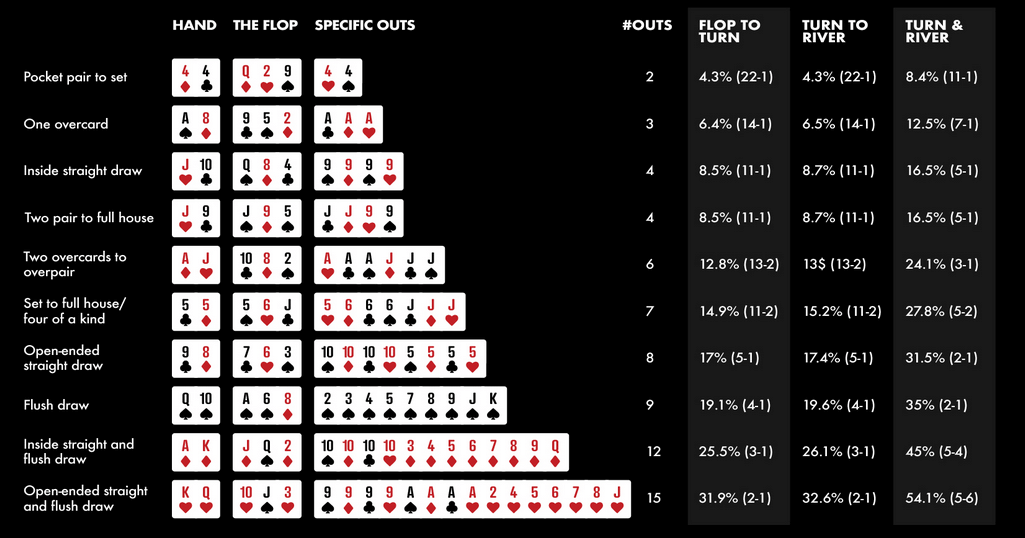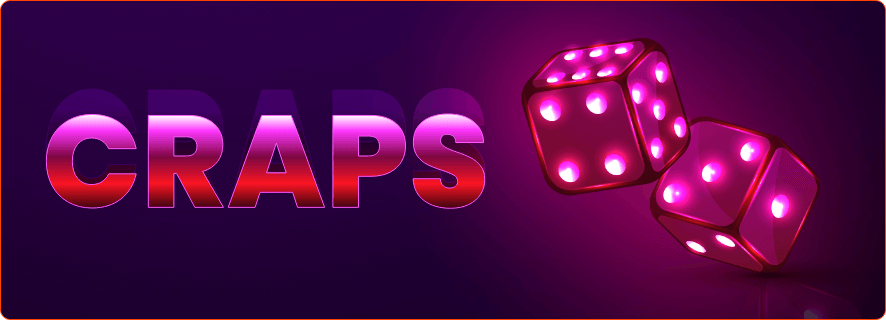Poker Odds Guide – Understanding Poker Stats and Probabilities

Wanna play poker like a boss but things ain’t panning out the way you thought they would? Here’s our insightful take on the game of poker and, more importantly, poker odds.
People often associate this awesome table game with luck. I say this dead-pan approach means nothing because poker is so much more than keeping your fingers crossed and hoping for the right cards to fall from the sky. It’s a game of strategy, calculated probability, and mathematical odds. It’s a game of profiling your opponents and exploiting their weaknesses.
Understanding poker odds and how to utilize them is necessary if your goal is to play poker on an enviable level. Being a good poker player is easy but being great requires mastering the mathematical aspect of the game, too. Let’s get to it!
What Are Poker Odds?

Poker odds are best described as your chances of winning or losing. This includes how frequently you need to call, make a bet, or fold. Every bet that you make in a poker game (raise or call) has its own odds.
How do poker odds work?
OK, let’s say you are betting on a horse race and you get odds of six to one ( 6:1). This means that for every buck you bet, you are expected to win $6. So if you bet $10, you can get a total of $60. The bigger the odds, the lesser is your chance of winning, as these particularly big odds are called long shots. So, if someone offers you 100:1 odds, keep in mind that your chances of winning are thinner than air, man.
The poker odds calculator
Poker players use poker odds calculators to calculate more complicated situations and implied odds. Poker calculators are algorithms that use probabilistic or statistical factors to determine your chance of winning, losing, or even tying a poker hand. Instead of you banging our heads against a wall, we now use software to calculate poker odds for us, man.
Given the rules and complexities of poker games, most calculators are similar to statistical tools. Probabilities and card counting are barely used. You can find a whole bunch of Texas Hold’em poker odds calculators online that let you run any poker table scenario you can imagine. They help you to determine your odds and outs, thus incorporating the math behind winning and losing poker hands.
Since I’m not that good at math, I was thrilled to start using one of these bad boys. Not only do they help crunch raw numbers, but you are also able to determine:
- If you have the winning hand.
- Should you raise your bet.
- Should you fold before the pot increases and there’s no turning back.
What’s the difference between poker probability and odds?
Although a lot of new players think these two are the same, there is a big difference between poker probability and actual poker odds.
The probability of a poker hand is fractions or a percentage you can have to draw a particular hand. For instance, if you hypothetically get dealt a pair 20 times out of 100 draws, the probability is 0.2 or 20%. To better explain how poker odds are we are gonna use some math and we will use Y for probability.
Basically, poker odds are the ratio of drawing a distinct hand vs not drawing it at all. Not getting the hand would be 1-Y. Here’s the formula: PROBABILITY/1-PROBABILITY=ODDS. So, to calculate the odds of drawing that pair we discussed earlier, it goes as follows: 0.2/(1-0.8)=0.25, or the odds are 1:4 to draw a pair.
Why Is Calculating Poker Odds So Important To Learn?

What’s the chance to get a flush draw, three of a kind, pocket pair, or full house? How much money should you bet? Should I bet small or go all in? How many outs are there and what is considered good odds?
These questions are integral to each poker game, forcing players to try and make conscientious decisions. Goes to show getting better at calculating poker odds is essential. By doing so, you not only improve your chances of winning, but you are also able to decide HOW to play a certain hand and adjust your poker strategy according to your chances.
In a standard game of poker, there are almost 2.6 million hand combinations. 2,598,960 to be precise. But don’t let this vast number of hand combinations discourage you. Learning to calculate the chances of getting THE right hand will help you see the potential risks more clearly.
How Do Poker Odds Work?
Before we go knee-deep into calculating our poker odds, first, we have to calculate the number of our winning cards. These are called outs. The most important thing to know about them is that they represent the cards that improve your hand.
For example, you have the king and nine of hearts, and two other hearts at the dealer’s layout. To get a flush, you calculate outs by deducting from the 13 cards (for every suit) minus 4 hearts that are visible for you (two in your hand and two at the table) equals 9 hearts still available in the deck – nine outs. In all of these calculations, we ignore the opponent’s hand.
Why am I bothering you with this? Well, we can now use these outs to calculate our poker odds of getting this flush. For example, 52 deck cards minus 2 cards in your hand minus 4 cards at the table (flop and turn) equals 46 cards that are unseen. So, with 9 outs in the game, there are 9 cards that will help you win and there are 37 cards that will cause you to lose. The odds to get the card that will make you a winner at the river card is 37 to 9, or approximately 4:1.
How To Be Certain When To Call A Bet?

By determining that we have 4:1 odds of getting the winning hand, we must decide if we should continue and call a bet on our opponent. This depends on how big the current pot is. I am not saying that you should go all shark on everyone’s ass if you see a big pot. Rather, stop for a sec and determine the ratio of money you could win, depending on your opponent’s bet. How do we do that?
Let’s expand our example from above:
- For example, there is $90 in the pot, and your opponent goes and bets $10.
- The total pot is now $100.
- To continue playing you must match your opponent’s bet of $10 so you can see the river card. This is gonna cost you $10 to see if that last card is the one you need to win.
That said, you have 4:1 odds of winning and you must bet at least $10, which in this case is $40 you would normally win. If you decide to continue playing and pay $10, the pot is worth $100, meaning that with a $10 bet you could earn $100, making these odds 10:1. So, what should be your call? Yes, because your opponent has given you the 10:1 odds when your actual chance of winning is 4:1. It’s like if a bookie would give you a 10:1 odds to bet on a horse that has a 4:1 chance of winning the race.
But what if I lose?
There’s ALWAYS a chance for you to lose a hand, mathematically speaking. However, keep in mind that your odds of winning are 4:1 and in the long run, these odds will definitely pay off. Let’s sum up everything we have determined so far:
4:1 are the odds you have to win the hand. This implies that for every hand you win you’ll lose 4 hands.
10:1 are the odds you’re getting to call your opponent’s bet and this suggests you’ll win $100 from a $10 bet.
Imagine that this situation comes up 5 times during your poker game. It will look like this:
You won $100 on one hand. On the next 4 hands, you lose $40 (4 hands times $10). The result? You, my man, are richer for $60 since you’ve started playing.
The Rule Of 4 and 2
I know this can be a lot to take in, especially if you are a beginner. Before you get better at poker calculus, there is a handy shortcut that helps you calculate your chances of winning quickly and with decent precision. I say decent because this method is not 100% accurate, but it still gives you a better picture of the game.
The method is called “the rule of 4 and 2”. Let’s continue with our previous example. So on the flop, you have 9 poker outs. To calculate the chance that the next card on the turn or river will be your winning card, just multiply 9 with 4 and you’ll get 36%. To calculate your chances of getting the winning card on the river, just multiply 9 with 2 and you’ll get an 18% chance to win this hand.
As I said, this method may not be 100% accurate but it’s good for players who are new to playing online poker games. Once you master this simple calculus, you can then advance to calculate the exact percentages.
Common Poker Hand Odds

Although players receive their cards randomly and all of the decks are properly shuffled, from time to time, some hands occur with the same odds. We like to call those common poker hands odds.
We’re are gonna take a small tour through some of the most common hands, that every poker player should know. Keep in mind that the examples of the odds occur after the flop, meaning there will be 4 cards at the dealer’s layout already.
Open-ended straight draws (4.8:1)
An open-ended straight draw is a hand that has four connected cards requiring to hit one of four outs at one end or one of the four at the other end making it a total of eight outs. For example, you have 8 and 7 in your hand and K, 9, 2, 6, and A on the table. This means you have 8 outs, four tens, and four fives.
Four to a flush (4.1:1)
A four-flush (flush draw) is a hand where you are one card short of having a full flush. This is often a good hand, as it’s really unlikely that another player will have two hole cards of your suit. However, if you don’t have an ace, you should be cautious as this will reduce your odds of winning.
Inside straight (10.5:1)
Often called a gutshot, inside straight is when you have four cards that can form a straight while one of the middle three cards is missing. For example, 9, 10, J, Q, and K are straight – if 10, J, or Q is missing, it becomes an inside straight.
One pair to two pair or trips (8.2:1)
This is the seventh-best possible poker hand you can get and is made with two cards of identical value. For instance, if you have KJ and you assume an opponent has a pair of aces, you have five outs to win: three kings and two jacks. However, this is based on the assumption that your opponent doesn’t have AK or AJ, that is.
Overcards (6.7:1)
Overcard applies to hole cards (the cards dealt to you) that are of higher rank than any other cards on the board. For instance, if you’re having A and Q and the flop comes 10, 8, and 6, there are two overcards on the board. Depending on what you think your opponent holds, you have six outs and 6.7:1 odds if your thinking is correct.
Drawing to a set (22:1)
For instance, if you have 8-8 in your hand and A-K-9-2 on the board, your only chance of winning is another 8. This is quite an improbable draw. It’s so far-fetched your best bet is to fold before you get yourself in deeper trouble.
Pot Odds
Basically, the term “pot odds” refers to the proportion between the size of the current pot and the size of the bet. For instance, if the opening pot is $10 and your opponent bets $5 (half the pot), then the total pot size is now $15 and you are facing a $5 bet.
This means that the pot odds are 15:5 or 3:1. This is a 75% to 25% ratio. So how does this help you? Well, by using this type of poker odds, you can conclude that if your opponent bets half of the pot, you can expect to get the best hand in at least 25% of the cases. This goes without actually factoring in any further actions. If you try to predict what will happen later and how odds will change, calculations will become more complex.
Poker Odds Chart
If you are eager to know some of the odds and probabilities of some of the most common poker hands, there are a bunch of poker odds charts online where you can quickly learn which hands to play and which one to not play. In the beginning, you can always print them out and keep them in your hand during a game, especially if you play online poker.
What Are Poker Outs?
Poker outs are all unseen cards that can improve your hand including the ones that will make you more likely to win when drawn. Identifying the number of outs you (and your opponent) have is a major component of every poker strategy. Also, poker-outs are absolutely crucial when it comes to calculating poker hand odds.

What are Implied Odds?
Implied odds represent the amount of money you are expected to win if you get one of the outs. In combination with pot odds, this method is most commonly used to assist you in understanding if calling a bet with a draw is actually worth it.
If you foresee winning more money from your opponent after you hit your draw, then you have what we call good implied odds. On the other hand, not being able to get any extra dough from your opponent on a future card draw, means you have little or even no implied odds. It’s almost improbable to figure pot odds precisely because it would demand quantifying and considering many variables – every possible card, bet size, action, etc. The best you can do is to make an approximation, using logic. What you can actually calculate is the minimum amount you would need to win on future draws to justify some expensive calls.
Poker Odds Summary
Talking in terms of numbers, calculations, and probabilities may seem a bit dull. And yet, these things are what poker is all about, they are the engine of the game.
Don’t let folks convince you that poker is just luck-based or that there aren’t a lot of skills involved when playing. I always responded to them with a question: If that’s so, then why do we always see the same faces in the finals every year at big poker tournaments?
That said, I wish you luck in your online gambling endeavors, and may the odds be ever in your favor. Being able to calculate your chances before deciding whether you should bet or not is a trademark of every seasoned poker player. I suggest you learn to do the same. We got you, Bro!








